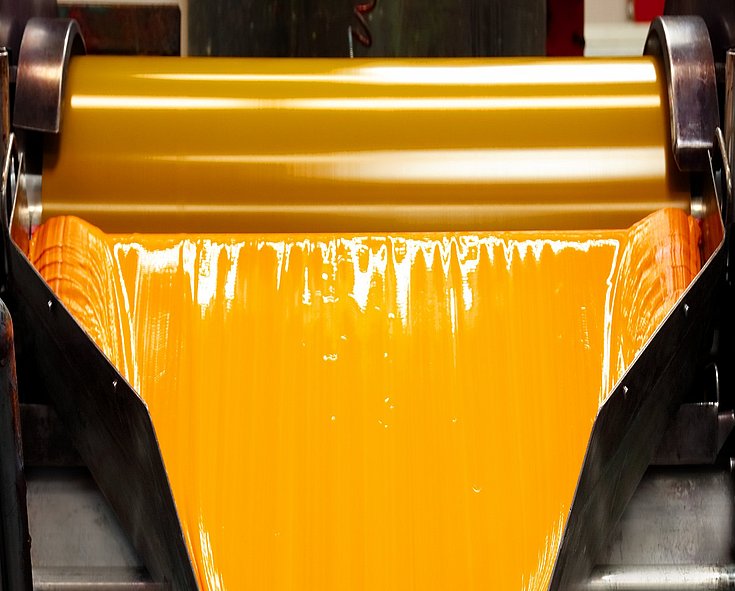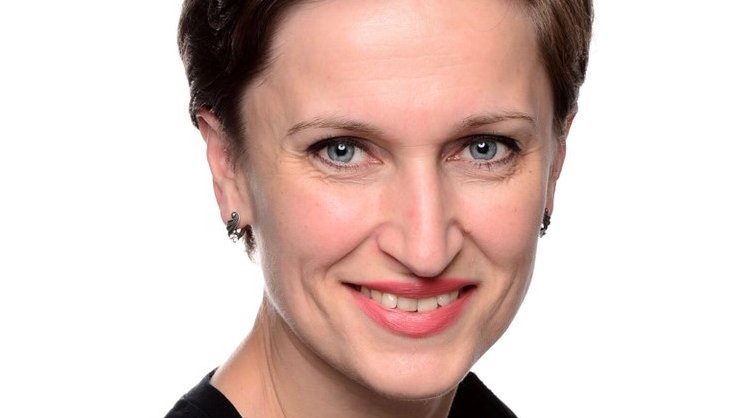
Colors are passion, emotions and personality. At Siegwerk, inks and coatings are our specialty and we use color to bring the packaging and products of our customers to life.

Q: Anna, can you please explain what paperization means and where this trend comes from?
A: Well, the ongoing climate change creates an undisputable need for rethinking today’s way of living towards circularity and away from the linear “use and dispose” approach. Today, sustainability is more important than ever. A growing environmental awareness of consumers is concretely driving companies worldwide to shift their packaging solutions to green alternatives further reducing the waste of plastic packaging. In this context, the use of renewable and recyclable fiber-based materials is moving into the focus of packaging designers. Switching from plastic-based to paper or fiber-based packaging materials is what is generally called paperization. Typical examples for such a transition are: paper pouches, e.g. as packaging of cereal, pasta, and crisps, or fiber-based containers used e.g. for deli food or as trays for fresh vegetables and fruits, or paper shopping bags.
Q: So, packaging paperization primarily aims to reduce plastic waste?
A: In the sense of a circular economy today’s overall goal is to use recyclable or renewable packaging materials so that resources can be used as long as possible and packaging waste does not end up in nature in the first place. The general purpose of packaging is to protect, preserve, and promote the packed goods, a job plastic packaging does very well in many application areas. But the problem with plastic in our, still mainly linear, economy is that it’s often not recycled, or even worse; ends up in the environment and the oceans. Paper instead already has a very well-established recycling stream in many places around the world. In other words, wherever the same packaging functionality can be achieved switching from plastic to paper or fiber-based packaging, we can leverage a proven material recovery stream. However, to unlock the full recycling potential, “paperized” packaging solutions need to support the recycling process with repulpability and properties ensuring compliance to existing recycling streams - otherwise paperization misses its target.
Q: And where are the limits of paperization?
A: In comparison to multi- or mono-layered plastic-based packaging, paper or fiber-based materials have little to no barrier properties as they are inherently porous and hydrophilic, limiting the performance potential. That’s why it’s also unlikely that paper could ever fully replace plastics for all applications someday. To get around these performance limitations, paper or fiber-based packaging can be combined with specific coatings to create a sufficient barrier between the filling good and the packaging enabling its use for an expanded range of applications. Innovative barrier coatings can facilitate the switch from overengineered plastic to simpler paper and fiber-based packaging. Therefore, barrier coatings play an essential role in widening the packaging paperization scope by supporting the development of recyclable and circular packaging solutions that are enabled for the use of an already well-established and proven recycling stream. It always depends on the final end purpose of a packaging if it can be switched to paper or not. But let’s be clear, while it may not be possible to replace every type of flexible packaging with renewable and recyclable paper-based alternatives, there are many that could. And as long as those are tailored for paper collection, sorting and recycling this would already be a positive move for the circular economy.
Q: Which kind of barrier types can be created by using coatings?
A: Relevant barrier performances for paper packaging combine the protection of the filling good from the outside as well as the protection of the packaging material from the filling good. The protection of the filling good from the outside includes for example barriers against water and water vapor, oxygen and other gases, as well as aroma, oil, grease, and UV light. In turn, barriers for the protection of the packaging material from the filling good include for example barriers against water, oil, and grease as well as barriers for media resistance, for example against acids, bases, or alcohol, depending on the filling good. Moreover, the barrier performance of a coating can also be extended with sealability – a very important attribute for many packaging converting processes.
Q: And what are critical factors for a successful barrier performance?
A: Critical for the barrier success are factors like the selected base paper, used coat weight, use of pre-coating, primer, or multi-layer application as well as the selection of the right coating application and drying method. In this regard, it is important to mention that there are many people looking into barrier coatings from different parts of the packaging industry. It is still a relatively new topic on the market and exact barrier requirements are often not clearly defined yet. As polyethylene (PE) and other polyolefinic co-extruded barrier layers have been commonly used to coat paper packaging so far, it is often taken as a reference for barrier performance. This leads to potential overengineering of what would actually be needed by barrier coatings to maintain packaging functionality for a comparable shelf-life of the filling goods. But there will be a learning process in the packaging market. All in all, packaging paperization requires extensive R&D efforts to develop new barrier coatings for all performance levels meeting also the highest packaging functionality demands. Besides, it’s about enhancing equipment compatibility while always keeping in line with recycling requirements.
Q: Talking about developments. What are Siegwerk’s activities in this area?
A: Siegwerk is a complete solution provider offering advanced coatings, varnishes and ink systems for all types of fiber-based materials. We are already focusing our attention on the development of functional barrier coatings for several years now. We already offer a broad range of products that address the performance gap of paper and board and facilitate the transition to circular fiber-based solutions for packaging applications from flexible packaging to folding cartons to corrugated boxes. Together with our partners and customers, we are continuously working on optimizing barrier properties and improving sustainability. We strongly believe that together we can make a difference and drive the packaging industry towards a Circular Economy.
For more information about Siegwerk’s approach and solutions for the realization of a Circular Economy please visit: https://www.siegwerk.com/en/circular-economy/our-circular-solutions.html